News and updates
NASA, SpaceX, Apple: How Czech Firm RFspin Conquered the Global Antenna Market
- In Media
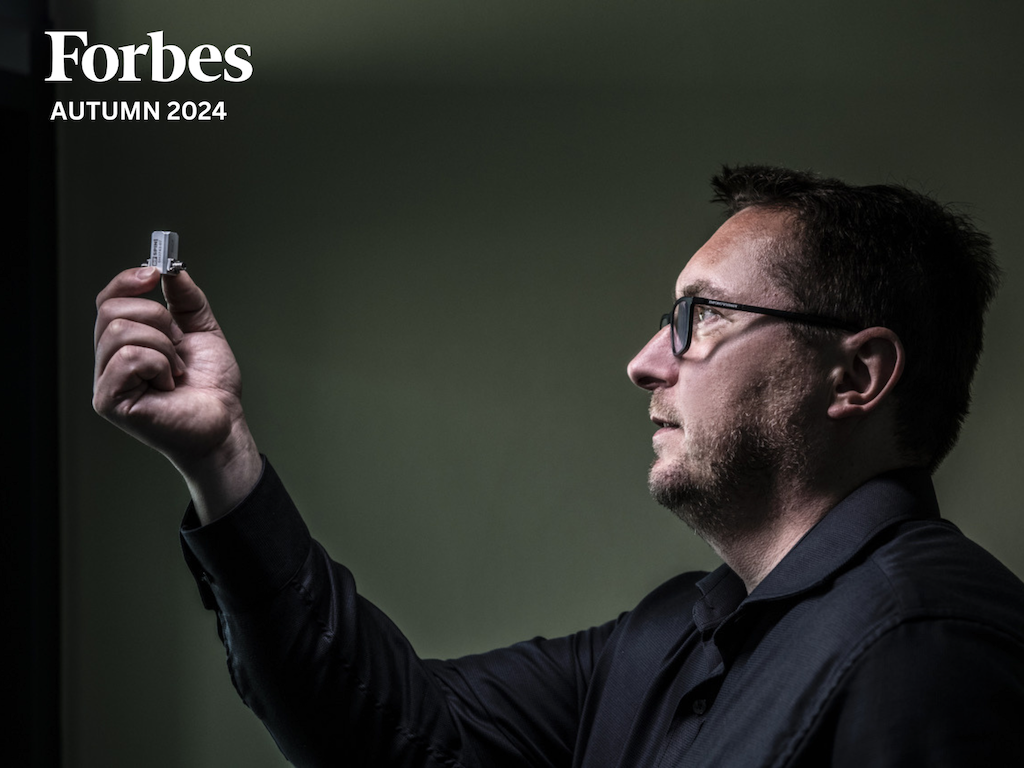
NASA, SpaceX, Apple: How Czech Firm RFspin Conquered the Global Antenna Market
By Julie Mahlerová | For Forbes Czech Edition, Forbes Next Technology Special
Photo by Michael Tomeš
In a world increasingly dependent on antennas, Zdeněk Hradecký and his company RFspin have carved out a niche supplying cutting-edge technology to giants like NASA, SpaceX, and Apple.
A grey-black harbinger of bad weather hangs over the massive grey-red hall. Gravel crunches under the car’s wheels in the parking lot, and Zdeněk Hradecký, the owner of RFspin, is already waiting at the company’s door. He leads us up the stairs, and we pass doors with English inscriptions.
“We receive visitors from Japan, America, Finland, Sweden…” he narrates as we sit down in a glass-walled meeting room, while outside the storm we barely escaped is already raging. One floor below, a different and carefully rehearsed orchestra is playing. That’s where the production of world-class products takes place.
RFspin mainly deals with the development and subsequent manufacture of broadband antennas. These are used in measuring systems of development and research centers, from universities through large corporations to private companies. They are used in industrial and military applications as well as space agencies.
Just to name a few – Czech antennas are used by NASA, SpaceX, Airbus, Apple, Mercedes and many others. Currently, the company supplies its products to all continents except Antarctica. It has eleven distributors around the world, from the USA to Japan. What should we imagine under the words antenna and measuring antenna?
It is an important component for receiving or transmitting radio frequency signals, which can be used, for example, for testing electrical devices. So, for instance, it ensures that a running microwave doesn’t turn off the phone and that the radio in the car doesn’t stop playing because of an overtaking vehicle. And much more.
There is a wide range of antennas that RFspin manufactures; in terms of the number of types, they have long since exceeded the number eighty. The products differ in use, frequency, polarization, radiation characteristics. It depends on whether the antenna is to be integrated somewhere or is to be used for measurement.
“We deal with the design and development of measuring antennas mainly for research centers and institutions, but we also do customer design,” adds Zdeněk Hradecký. With twenty years of experience, they already know what type of antenna would be suitable for a given client or whether it can be made at all from a physical point of view.
In Prague, they have software that the company uses for modeling. It’s a unique type, the purchase of which costs almost three million crowns, and the price of annual maintenance is around half a million. All this just so they can design antennas at all.
In the software, Zdeněk Hradecký then models what the antenna should look like, what parameters it should have, and he can also use it for thermal or mechanical analyses.
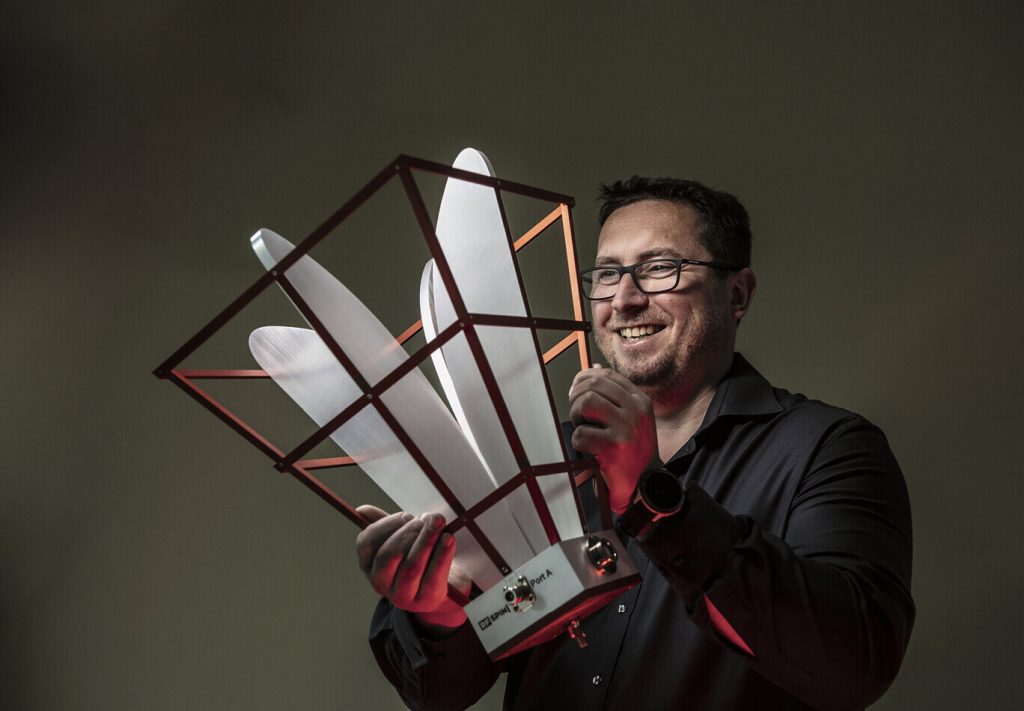
But back to the beginning, best to the year 1994. That’s when Zdeněk Hradecký started at the Czech Technical University in Prague and didn’t yet know exactly what he wanted to do. His original intention was to study telecommunications, but he was approached from the Faculty of Electrical Engineering and transferred there.
That was exactly the moment when antennas entered his life – and he stayed with them. They fascinated him so much that already during his studies he was thinking about how to design antennas and how to improve them. And gradually he worked his way up to the global level. Antennas manufactured in the hall, above which we sit in the meeting room, go to all corners of the world.
“Everything is done here. Production, surface treatments, measurements. We only buy connectors for antennas, because we have everything better under control in terms of quality and delivery dates,” he adds, noting that they also cooperate with Czech companies in this area.
“And the final product then goes to the customer absolutely anywhere,” says Hradecký, carefully holding one of the smallest antennas, about the size of a finger joint.
The wavelength is directly proportional to the frequency, and thus determines the size of the antenna.
“The wavelength is directly proportional to the frequency, and thus determines the size of the antenna. This one is tiny and light, suitable for a drone, for example. This one is used for Airbus Defense and Space. It is designed to cover a wide beam of signal that you catch from different directions. As the drone flies high, it covers a relatively large area on the ground,” describes Hradecký.
So either the antenna transmits the control signal, or the drone with the antenna can be controlled from the ground using the signal. Hradecký often can’t even say what all the other antennas are used for and what type of information they transmit. Some of his antennas are used in research and projects that are secret.
The main design, like the entire company, is based on Hradecký – and his days tend to be long. He gets up early in the morning to communicate with the Asian world, during the day he focuses on Europe, and in the evening and at night he deals with America. He admits that in the past there were moments when the company was a “one-man show” and he did absolutely everything.
Currently, he has a team of fifteen employees – four in Prague, one externally, and ten people work in Nová Paka in production. Hradecký has not lost contact with his alma mater either; he teaches antenna design and construction at CTU.
“Once a year I have lectures, I communicate with students and then it’s easier for me to find someone for the company when I need to expand the staff,” says Hradecký. He founded the company in 2003 with four other people from the faculty after starting his doctoral studies in 2002.
RFspin was originally supposed to be a spin-off, hence the name of the company, RF in the name stands for radio frequency. But gradually people started leaving. One became the head of the department, another retired, and Hradecký bought out the remaining two members. Since 2015, he has been left alone with the company, but it wasn’t such a big change for him.
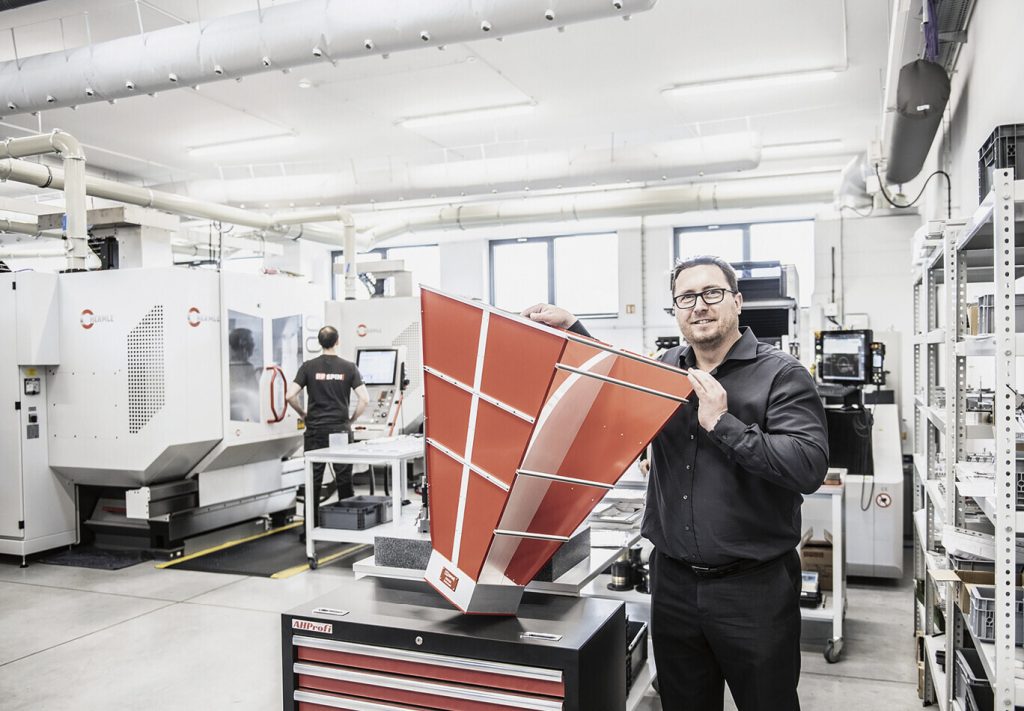
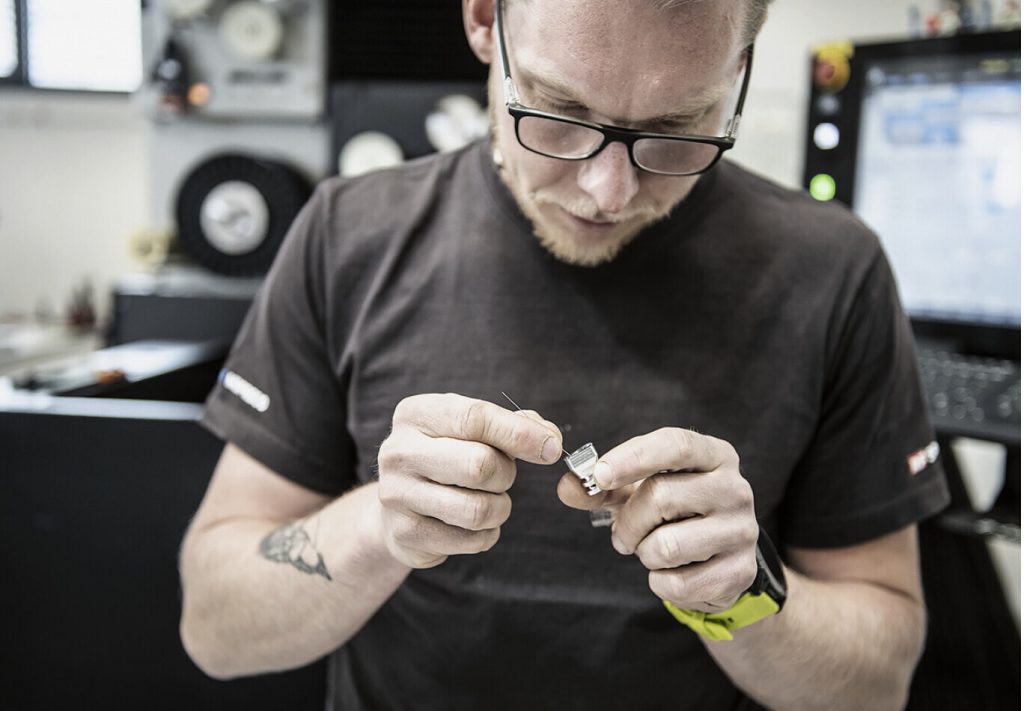
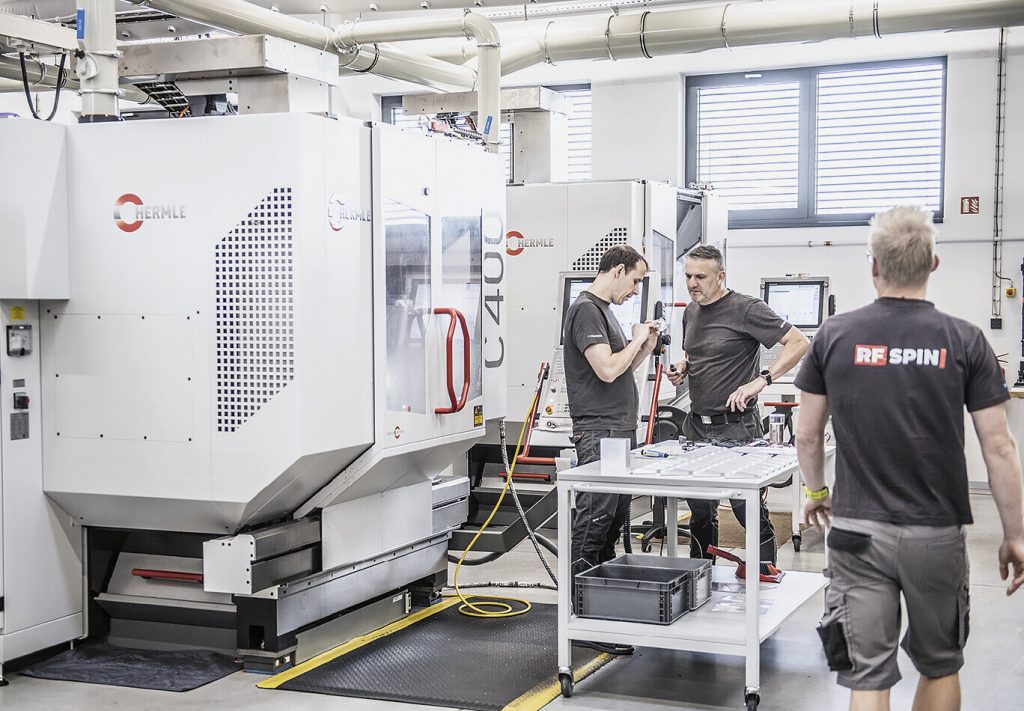
“Even before that, it was built on what I came up with and arranged myself,” he describes. The year 2009 and becoming independent were a turning point for him, the company took a new direction. However, everything he designed for RFspin was manufactured externally. And as the portfolio grew, Hradecký decided to build his own production hall to have everything under control and not be dependent on suppliers.
Seven years ago, he rented a hall, bought the first machine, and a year later production started. But the rented hall gradually ceased to be sufficient for the technologies and quality, it lacked insulation and the machines they started with were sensitive to temperature. That was the moment when Hradecký decided to build his own hall – they opened it in Nová Paka at the beginning of last year.
“Once I was on an excursion to Škoda and I liked how clean it was there and everything ran like clockwork. We may not be as rich as they are, but we want the environment to be of a high standard and comfortable for employees and machines,” he describes the hall.
It already has central filtration systems that remove aerosols from each machine, and air conditioning that controls the temperature, although now RFspin also has machines with temperature compensation that are no longer sensitive to ambient temperature.
“The funny thing is that we are able to produce an antenna that weighs only a few grams and fits in the palm of your hand, and yet the production machine weighs ten tons,” smiles Hradecký. Their work must be accurate to thousandths of a millimeter.
“This raised our prestige in the world. We are able to guarantee accuracy and parameters, each antenna is measured, tested, has its own antenna report and a unique QR code that the customer can scan to retrieve data and measurement protocols,” adds Hradecký.
“One of the most important parameters is the impedance matching of the antenna and our antennas are among the world’s best,” he adds. RFspin produces around a thousand antennas annually. Price-wise, they range from several tens of thousands and the more expensive ones cost half a million crowns and more, the company’s annual turnover is approximately fifty million crowns.
Over the years, they have also had an experience where they got burned. They signed an NDA, a non-disclosure agreement, with a distributor in America and a customer about making a certain type of antennas for them – these were from RFspin’s production, but delivered under the customer’s brand.
They also wanted to supply production documents, which Hradecký didn’t like, and he went to make sure that he had nothing to fear since an NDA was signed. “I already had doubts then, after all, it’s our know-how, that’s what feeds us,” admits Hradecký. At first, he provided simplified models, but that wasn’t enough for the customer, so Hradecký sent a few models. That was a mistake.
“We’re moving on and we’re stronger, but it was very painful then.”
For two years, RFspin supplied them with antennas under their brand, but then the Americans completely copied them. They dealt with courts for a year, but ultimately unsuccessfully. Hradecký evaluates it as a great lesson and for him, it no longer exists that he would provide anyone with models of his products. “We’re moving on and we’re stronger, but it was very painful then,” he comments on the unpleasant life chapter.
Currently, approximately ninety percent of their activities represent the production of antennas from their own portfolio and roughly one-tenth of antennas are made to order for customers. Such a custom antenna design can take between two months and one year. During that time, there is communication about the design, recalculation and optimization of the electrical part, construction work, assembly technology and testing.
It happens that they have to reject orders because the requirements of companies are too unrealistic – but then maybe thanks to cooperation with NASA they can finally call: It’s possible.
The antenna first comes into being in the software, where materials that go into production are prepared. There, the raw material is first machined, then finishing work and surface treatments take place, and finally it is fitted with a connector. “This brings the antenna to life and it goes to Prague, where we have a warehouse and measuring workplace, we also use the capacities of CTU,” says Hradecký, who, however, plans to move the measuring workplace to Nová Paka in the future.
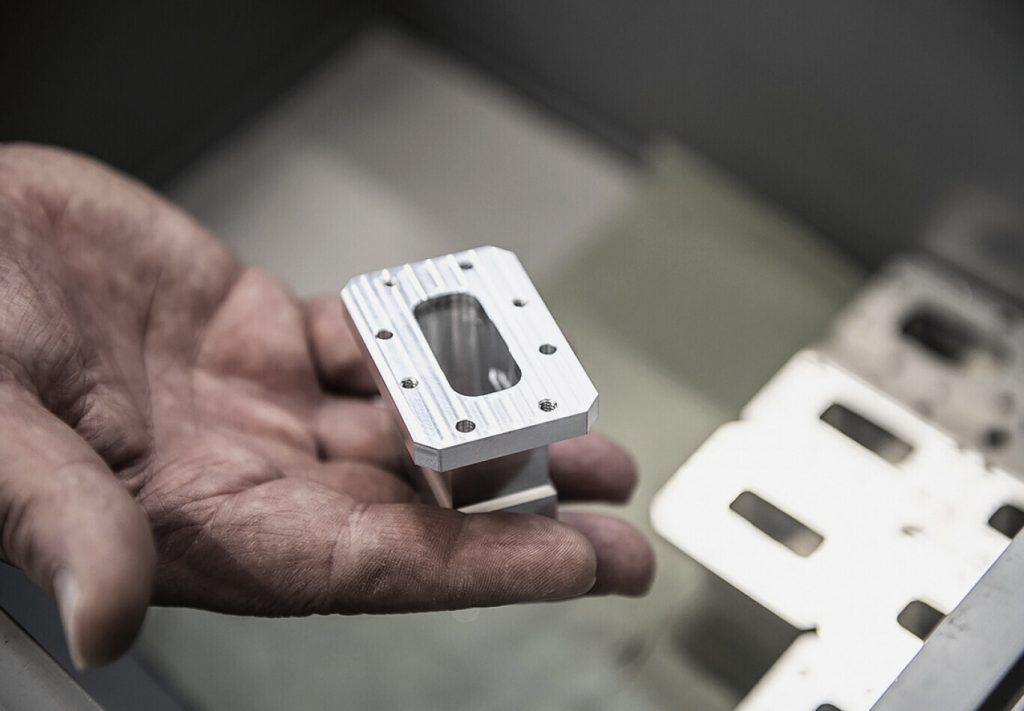
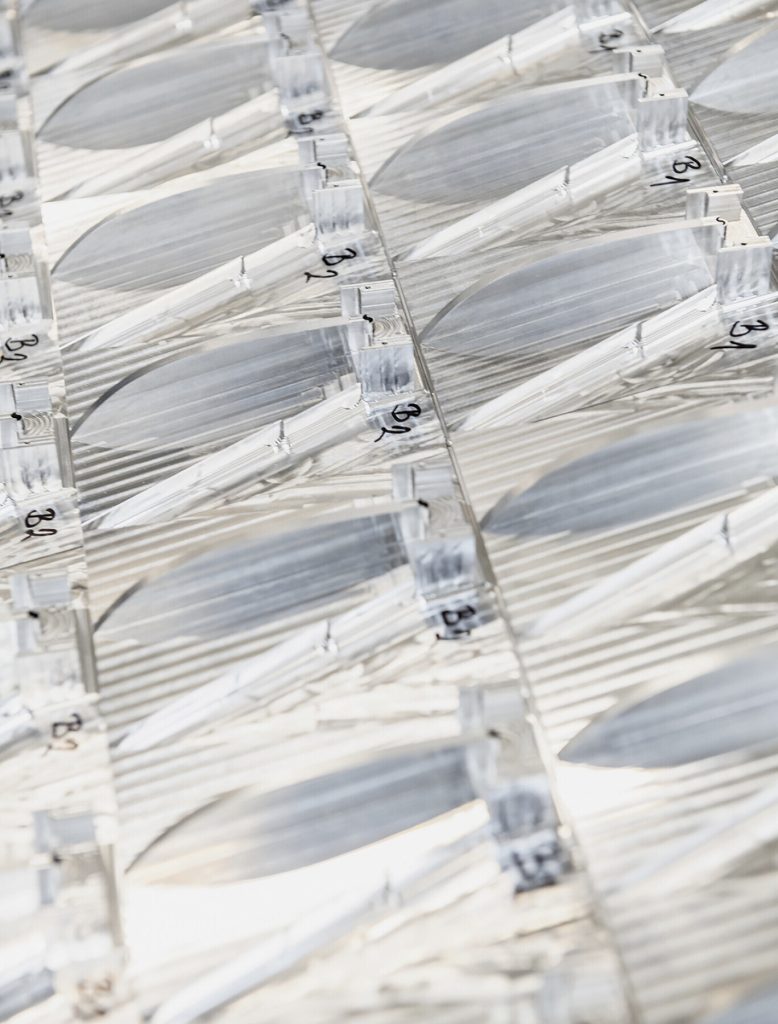
“Once we had a situation where we told Airbus that we weren’t able to create the required antenna for them. But then we did development for NASA, based on which we were able to lighten the antenna and thus meet the weight limit originally required by Airbus,” adds Hradecký.
Although this particular contract for NASA didn’t end up in orbit. “The antennas fly on a balloon into space and measure electromagnetic waves. Unfortunately, we didn’t fly in the end,” describes Hradecký. Although they managed to produce an antenna that had better parameters than the competition…
“… NASA then decided that it must be done by an American company. It could have been a beautiful project for us because there were supposed to be one hundred and twenty of those antennas,” he adds. In the past, they also made antennas for Apple in England, Spain and America, where they supply antennas with absorbers for high-frequency bands.
Hradecký also collaborates with people from the university sphere, he has built a strong international network of contacts from the academic world, he goes to conferences, last year for example to Yokohama, Japan, and this autumn he is planning to go to Paris.
There he will present new prototypes from the Radio Over Fiber System project, the aim of which was to develop a system that will convert a radio signal into optical fibers and back to RF signal, up to a distance of several kilometers with the least possible signal loss.
See more news
Contacts
RFspin s.r.o.
Na Berance 57/2
160 00 Prague 6
Czech republic
